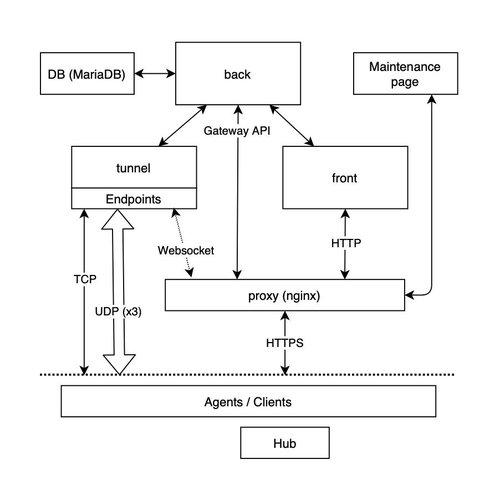1.2 Remotix Gateway Architecture
Technically, the Gateway consists of three parts: Gateway API server, Hub and Tunnel.
- Agents and Clients maintain connections with the Gateway API server.
- Hub is a web-based Agent management interface. It allows adjusting Agent settings remotely, performing maintenance actions, monitoring state and so on. It is also used to log in users in the Client apps with OAuth.
- Tunnel performs negotiation of connection parameters between Clients and Agents. It also serves as a relay if Client and Agent cannot connect directly.
Remotix Gateway On-Premise solution consists of both internally provided and some external components.
If you choose the manual installation but are not familiar with the named external components, find how to install them in #2.1. In the OVA and Docker packages, all the external components are included in the image.
- Internal components: all provided by Remotix
- Gateway API server, internally named “back”
- Hub server, “front”
- Relay server, “tunnel”
- maintenance page
- External components: third-party ones that may serve for many other tasks as well
- nginx (front proxy for HTTPS)
- MariaDB (database server)
- supervisor (process manager)
- (optional) postfix
- (optional) monitoring
- You’ll also need a valid TLS certificate for the Gateway to work over HTTPS. If you don’t have one, you may get it using Let’s Encrypt.
The relations between the listed entities are as follows:

The guide assumes that back, front and tunnel are all hosted on the same machine.